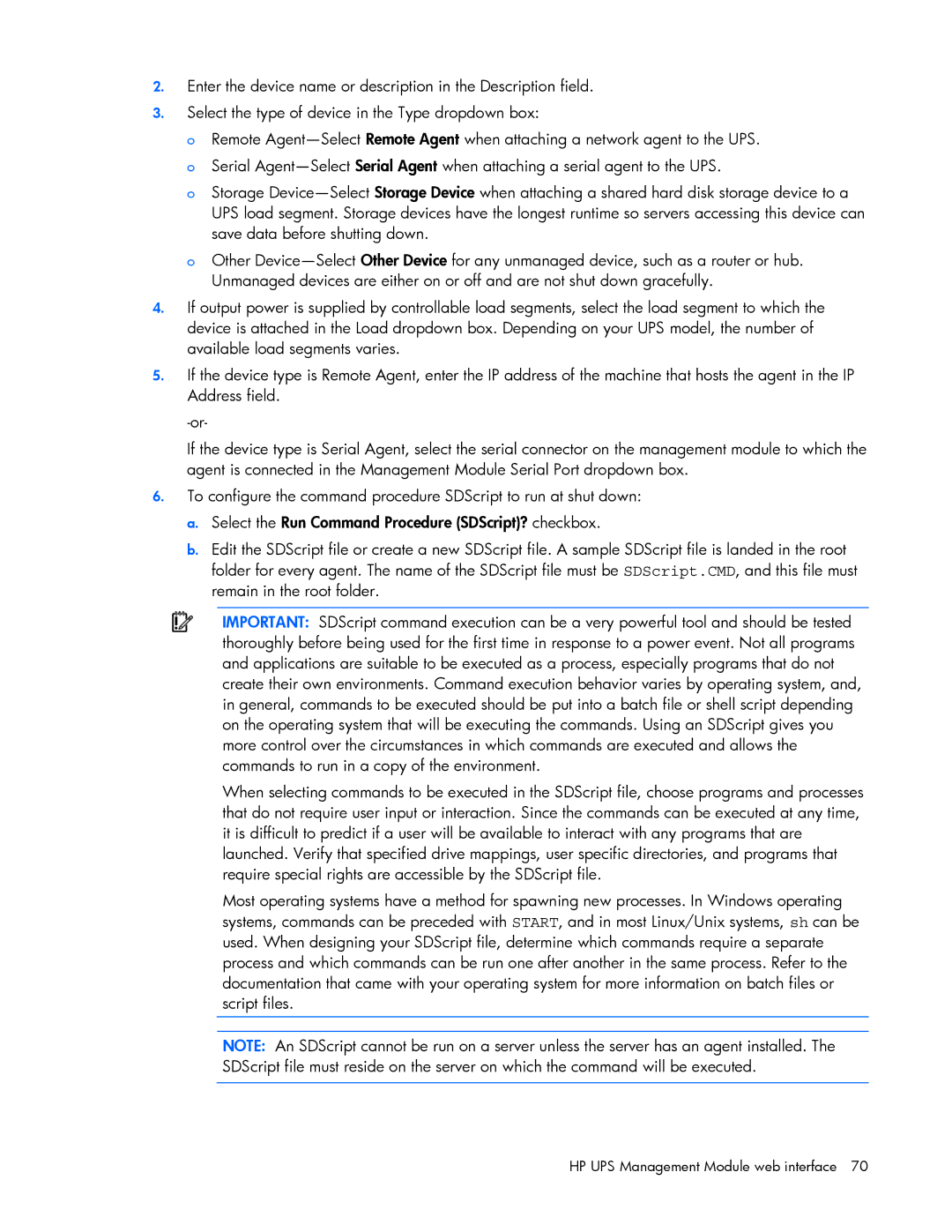
2.Enter the device name or description in the Description field.
3.Select the type of device in the Type dropdown box:
oRemote
oSerial
oStorage
oOther
4.If output power is supplied by controllable load segments, select the load segment to which the device is attached in the Load dropdown box. Depending on your UPS model, the number of available load segments varies.
5.If the device type is Remote Agent, enter the IP address of the machine that hosts the agent in the IP Address field.
If the device type is Serial Agent, select the serial connector on the management module to which the agent is connected in the Management Module Serial Port dropdown box.
6.To configure the command procedure SDScript to run at shut down:
a.Select the Run Command Procedure (SDScript)? checkbox.
b.Edit the SDScript file or create a new SDScript file. A sample SDScript file is landed in the root folder for every agent. The name of the SDScript file must be SDScript.CMD, and this file must remain in the root folder.
IMPORTANT: SDScript command execution can be a very powerful tool and should be tested thoroughly before being used for the first time in response to a power event. Not all programs and applications are suitable to be executed as a process, especially programs that do not create their own environments. Command execution behavior varies by operating system, and, in general, commands to be executed should be put into a batch file or shell script depending on the operating system that will be executing the commands. Using an SDScript gives you more control over the circumstances in which commands are executed and allows the commands to run in a copy of the environment.
When selecting commands to be executed in the SDScript file, choose programs and processes that do not require user input or interaction. Since the commands can be executed at any time, it is difficult to predict if a user will be available to interact with any programs that are launched. Verify that specified drive mappings, user specific directories, and programs that require special rights are accessible by the SDScript file.
Most operating systems have a method for spawning new processes. In Windows operating systems, commands can be preceded with START, and in most Linux/Unix systems, sh can be used. When designing your SDScript file, determine which commands require a separate process and which commands can be run one after another in the same process. Refer to the documentation that came with your operating system for more information on batch files or script files.
NOTE: An SDScript cannot be run on a server unless the server has an agent installed. The SDScript file must reside on the server on which the command will be executed.
